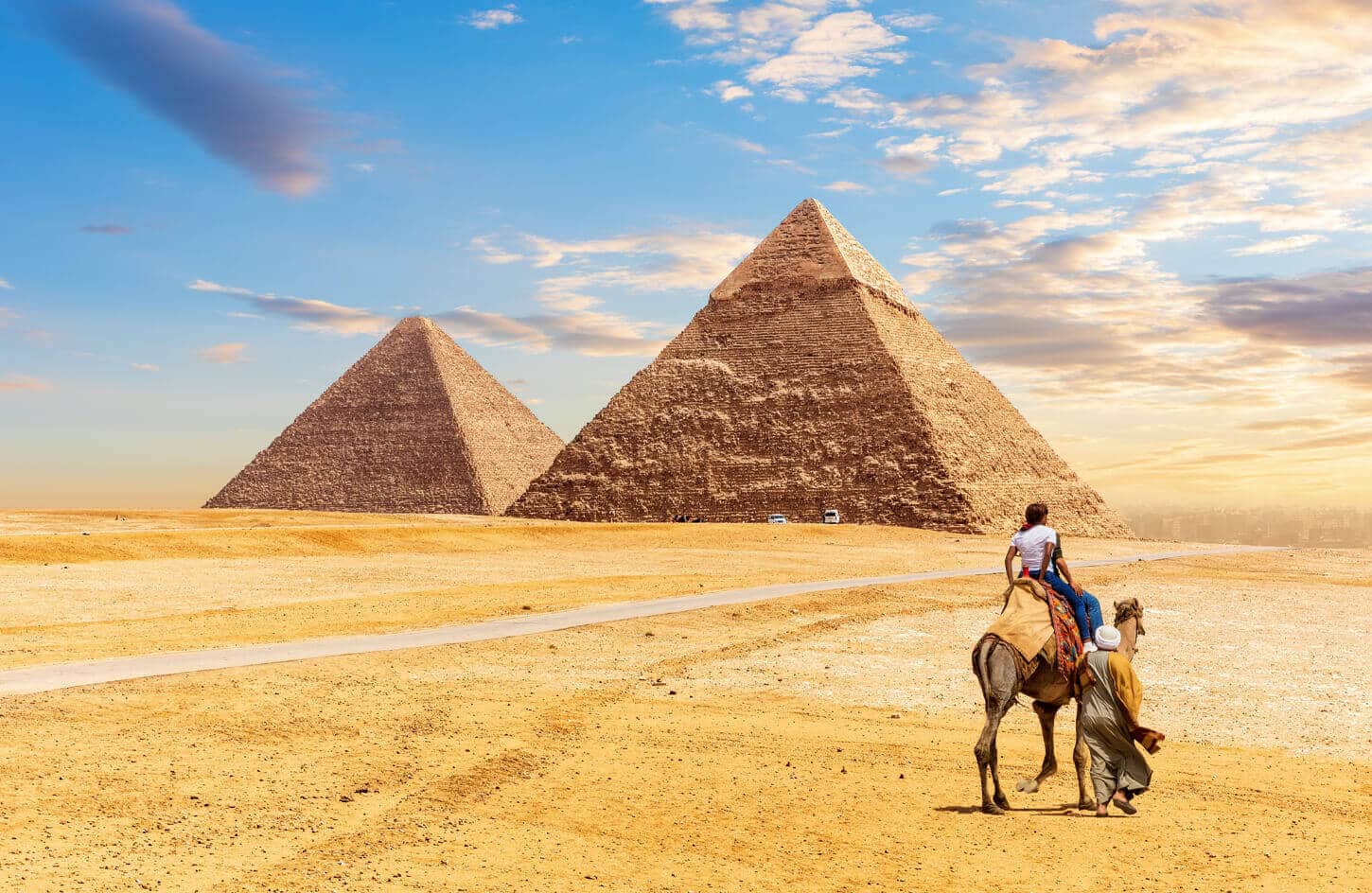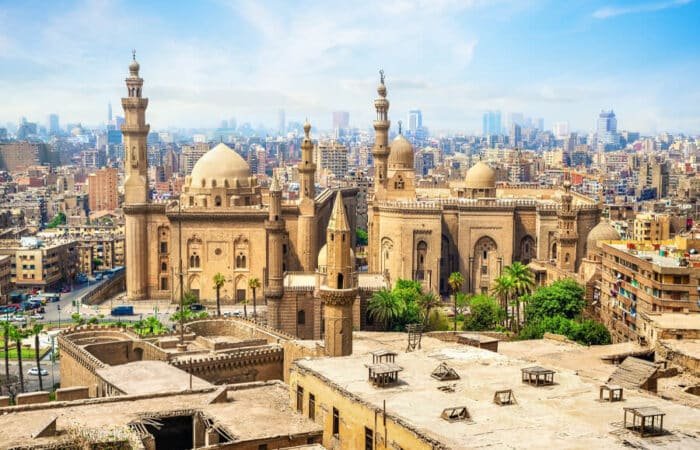Imagine standing before a massive temple carved into the Nubian desert. Its huge statues look out over the Nile River. This is the Ramses II Temple at Abu Simbel, a marvel from ancient Egypt. It has stood for millennia, showing the grandeur and ingenuity of the pharaohs.
But what secrets and stories are hidden in its walls? This UNESCO World Heritage site holds mysteries and a rich cultural heritage. Let’s uncover the stories of this architectural wonder.
Have you ever wondered why the ancient Egyptians built such a huge temple? And why it’s so important in history? Let’s explore the Ramses II Temple at Abu Simbel. We’ll see its architectural marvels and symbolic meaning. And how it still fascinates visitors from all over.
Key Takeaways
- Discover the awe-inspiring Ramses II Temple, a UNESCO World Heritage site that showcases the architectural prowess of ancient Egypt.
- Uncover the rich cultural heritage and symbolic significance behind the rock-cut temples of the Nubian region.
- Explore the grandeur of the colossal statues and intricate carvings that adorn the temple, revealing the ingenuity of pharaonic engineering.
- Learn about the remarkable relocation of the Ramses II Temple to prevent it from being submerged by the Nile river, preserving this ancient wonder for future generations.
- Gain a deeper appreciation for the Ramses II Temple as a testament to the enduring legacy of ancient Egyptian monuments and culture.
Unraveling the Mysteries of Ramses II Temple at Abu Simbel
The Ramses II Temple at Abu Simbel is a marvel of pharaonic architecture. It has amazed people for centuries. This huge temple was carved into the sandstone cliffs of southern Egypt.
Exploring the Grandeur of Pharaonic Architecture
The Ramses II Temple is a showcase of ancient Egyptian engineering. Its massive entrance, flanked by four giant statues of Ramses II, is awe-inspiring. It sets the stage for the wonders inside.
Unveiling the Symbolic Significance of the Rock-Cut Temples
The rock-cut temples like the Ramses II Temple were deeply meaningful in ancient Egyptian religion and culture. They were architectural marvels and key religious and cultural hubs. Here, gods were worshipped, and the pharaohs’ power was celebrated.
The temple’s walls and columns are filled with intricate carvings and hieroglyphs. They reveal the rich symbolism and mythology of Nubian monuments. Each part of the temple, from gods to pharaohs, holds a secret that still captivates scholars and visitors.
Book your Egypt Tour Package Now
Ramses ii Temple at Abu Simbel: A Monumental Marvel
The Ramses II Temple at Abu Simbel towers over the Nubian desert. It shows the grandeur and dreams of ancient Egypt’s famous pharaoh. Carved into sandstone cliffs, it showcases the ancient Egyptians’ incredible talent.
The temple’s size is stunning, with four giant statues of Ramses II at the entrance. Each statue is over 60 feet tall. They impress visitors and remind us of the pharaoh’s power and lasting impact.
Inside, the temple is filled with beautiful reliefs and hieroglyphs. They tell stories of Ramses II’s rule and ancient Egyptian gods. These carvings, kept in great condition, give us a peek into the ancient world’s culture and beliefs.
The Ramses II Temple at Abu Simbel is a true marvel. It shows the ancient Egyptians’ creativity and skill. People from all over the world visit to see this amazing ancient wonder.

The Colossal Statues: Guardians of the Temple
As you walk towards the Ramses II Temple at Abu Simbel, you see four huge statues of the pharaoh. Each statue is over 60 feet tall. They stand as sentinels, protecting the temple’s sacred areas. These colossal statues show the greatness of pharaonic architecture and the skill of ancient Egyptian artists.
Decoding the Intricate Carvings and Hieroglyphs
Getting closer, the detailed carvings and hieroglyphic inscriptions on the temple walls catch your eye. These ancient Egyptian art and iconography give a peek into the temple’s rich meaning. They tell stories of gods, myths, and Ramses II’s triumphs.
- Explore the captivating hieroglyphics that cover the temple’s exterior, revealing the pharaoh’s legacy and the temple’s sacred purpose.
- Marvel at the exquisite craftsmanship of the colossal statues, each one a testament to the skill and artistry of ancient Egyptian sculptors.
- Decipher the symbolic meaning behind the temple’s ancient Egyptian art and iconography, unlocking the deeper significance of this architectural masterpiece.
The Ramses II Temple at Abu Simbel is a symbol of pharaonic architecture and ancient Egypt’s culture. As you explore, you’ll be amazed by the colossal statues and the detailed hieroglyphic inscriptions. They tell the story of this incredible temple.
Architectural Ingenuity: Rock-Cut Engineering Marvels
The Ramses II Temple at Abu Simbel is a wonder of ancient Egyptian engineering. It’s carved into the mountainside, showing the skill of rock-cut architecture. This temple is a marvel of the pharaonic era.
Building a temple in the rock was a huge achievement in ancient Egyptian engineering. The builders carved out grand halls, statues, and reliefs. They made sure the cliffs stayed strong, showing the Nubian monuments era’s creativity and skill.
The size and detail of the Ramses II Temple at Abu Simbel are amazing. The four giant statues at the entrance are over 65 feet tall. The carvings and hieroglyphs on the walls show the temple’s beauty and the artists’ hard work.
| Engineering Marvels | Key Achievements |
| Rock-Cut Architecture | Carving a grand temple directly into the mountainside |
| Structural Integrity | Ensuring the stability of the surrounding cliffs and rock formations |
| Colossal Statues | Sculpting massive 65-foot-tall guardians at the temple’s entrance |
| Intricate Carvings | Meticulously crafting detailed hieroglyphic reliefs and artwork |
The Ramses II Temple at Abu Simbel is a symbol of ancient Egypt’s engineering and art. This rock-cut architectural marvel amazes visitors worldwide. It shows the creativity and skill of the pharaonic era.
A Celebration of Ancient Egyptian Religion and Culture
The Ramses II Temple at Abu Simbel was more than just a building. It was a sacred place that honored ancient Egypt’s rich traditions. Explore the symbolism and mythological references in the temple’s design and artwork. Discover the deep spiritual meaning of this incredible site.
Unraveling the Symbolism and Mythology Behind the Temple
The Ramses II Temple at Abu Simbel showed the deep respect ancient Egyptians had for their gods. The huge statues of Ramses II and the sun gods Amon-Ra and Ra-Horakhty on the temple’s front were not just impressive. They symbolized the pharaoh’s divine link to the gods.
Inside the temple, you’ll find many hieroglyphic carvings and murals. They tell stories of ancient Egyptian myths. From Ramses II’s battles to the gods and goddesses, every part of the temple is full of meaning. It gives us a peek into the spiritual beliefs of the pharaohs.
| Symbolic Significance | Mythological Reference |
| Colossal statues of Ramses II and sun gods | Pharaoh’s divine connection to the divine realm |
| Hieroglyphic carvings and murals | Depictions of ancient Egyptian mythology and the pharaonic culture |
| Alignment of the temple with the sun’s position | Celebration of the sun god Ra and the solar cycle |
The temple’s design, aligned with the sun’s path, shows the ancient Egyptians’ love for the sun god Ra. This amazing architecture shows the builders’ skill and the deep spiritual importance in ancient Egyptian culture.
The Great Relocation: Saving an Ancient Wonder
In the 1960s at Aswan , the High Dam threatened the Ramses II Temple at Abu Simbel. This UNESCO World Heritage site was at risk of being lost under the Nile River’s waters. But, a massive engineering effort saved it by moving the temple to higher ground.
The move of the Ramses II Temple at Abu Simbel was a huge task. It took over four years. A team of experts from around the world worked hard to take it apart, move it, and put it back together again.
This project was a huge success. The temple now stands safely above the Nile River. It attracts visitors from all over, showing the power of human determination.
Today, the Ramses II Temple at Abu Simbel is a symbol of Egypt’s cultural heritage. Its move is a testament to human teamwork and our dedication to preserving history for the future.
“The relocation of the Ramses II Temple at Abu Simbel was a triumph of human ingenuity and a testament to the importance of preserving our cultural heritage.”
| Key Facts | Details |
| Threat to the Temple | Construction of the Aswan High Dam threatened to submerge the Ramses II Temple at Abu Simbel under the rising Nile River waters. |
| Relocation Project | The temple complex was painstakingly dismantled, moved to a higher ground, and then reassembled over a four-year period. |
| Significance | The relocation of the Ramses II Temple at Abu Simbel is a triumph of human ingenuity and a testament to the preservation of Egypt’s cultural heritage. |
The Ramses II Temple’s move is a great example of global efforts to save UNESCO World Heritage sites. It shows the strength of working together to protect our history for the future.
Abu Simbel: A UNESCO World Heritage Site
The Ramses II Temple at Abu Simbel is a UNESCO World Heritage Site. It shows its huge historical, cultural, and architectural value. This ancient Egyptian monument, carved into the sandstone cliffs of Nubia, is a sign of the Pharaonic era’s engineering and art.

Preserving the Legacy of Ancient Egyptian Monuments
Keeping the legacy of these ancient Egyptian monuments is key. It makes sure the past’s amazing achievements keep inspiring people worldwide. Work to protect the Ramses II Temple and other famous sites is ongoing. The goal is to keep them standing strong and true to their original form.
In 1959, a big effort by UNESCO saved the Abu Simbel temples from being flooded by the Aswan High Dam. The temples were carefully taken apart, moved, and put back together on higher ground. This amazing move has made the Ramses II Temple a UNESCO World Heritage Site. It’s a global symbol of cultural heritage that needs to be protected.
Today, the Ramses II Temple at Abu Simbel shows the lasting impact of ancient Egyptian civilization. By keeping these monuments safe, we can still admire the ancient Egyptians’ creativity, skill, and beliefs. This way, their legacy will continue to inspire us for many years to come.
| UNESCO World Heritage Site | Year Designated | Criteria for Inclusion |
| Ramses II Temple at Abu Simbel | 1979 |
|
Exploring Abu Simbel: A Travelers’ Guide
Discover the awe-inspiring Ramses II Temple at Abu Simbel on your next Egypt trip. You can choose from a Nile river cruise or a guided tour with Egypt Tours by Locals. Both offer unique ways to dive into the temple’s rich history and culture.
For a memorable journey, consider a Nile river cruise to Abu Simbel. As you sail, the temple complex will appear from the desert. Local guides on a guided tour can share fascinating stories and meanings behind the statues and carvings.
If you like to explore on your own, rent a car for a self-guided tour. This way, you can see the temple at your own pace. You’ll be amazed by the architectural genius and the grandeur of Pharaonic culture.
| Experiences | Highlights |
| Nile River Cruises | Witness the temple complex emerge from the desert landscape |
| Guided Tours with Egypt Tours by Locals | Delve into the intriguing stories and symbolism behind the temple |
| Self-Guided Exploration | Discover the architectural marvels and pharaonic legacy at your own pace |
Exploring Abu Simbel, no matter the method, will be unforgettable. Start planning your Egypt vacation now. Dive into the captivating world of Ramses II and the pharaonic era.
Conclusion: Marveling at the Grandeur of Ramses II Temple at Abu Simbel
The Ramses II Temple at Abu Simbel is a symbol of ancient Egypt’s greatness. It shows the creativity, dreams, and cultural depth of the Egyptians. This huge monument, with its massive statues, detailed carvings, and deep meaning, draws people from everywhere. It’s a UNESCO World Heritage site, a key place for those wanting to dive into ancient Egypt’s history and majesty.
The temple’s design, the huge statues at its entrance, and the complex hieroglyphs on its walls show the ancient Egyptians’ skill and faith. Visiting this famous site lets you explore its deep meaning. You can learn about the myths and beliefs that guided the pharaohs.
The work to move and protect the Ramses II Temple at Abu Simbel shows its lasting importance. Seeing this temple’s beauty, you feel its lasting impact. It inspires awe and wonder in everyone who sees it.






















